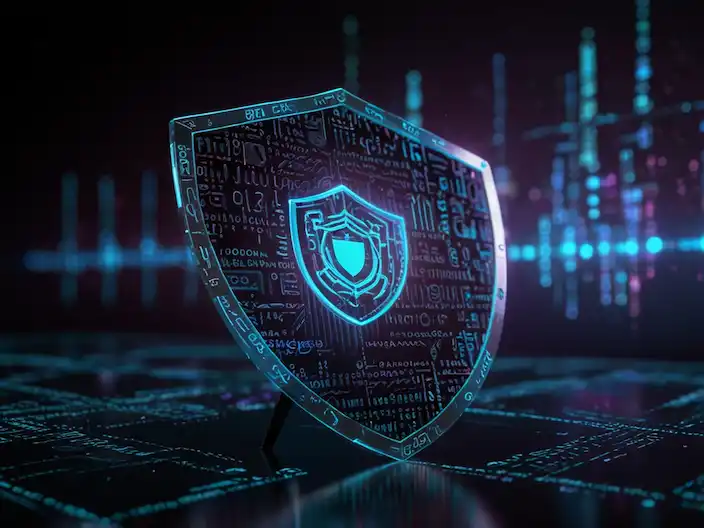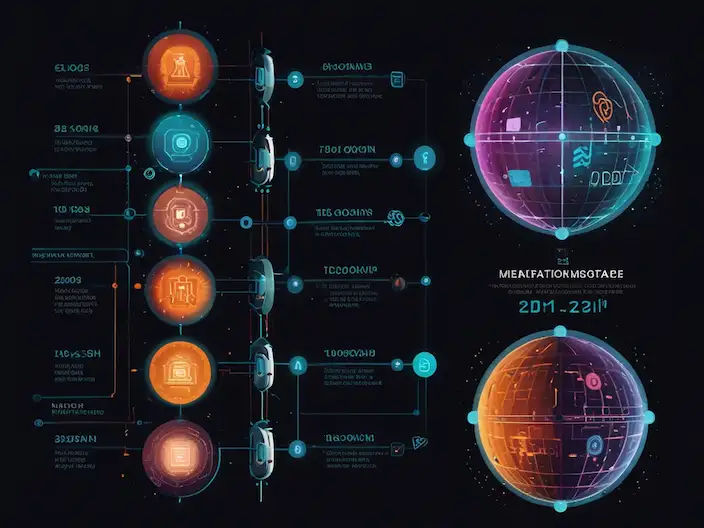- Introduction
- Overview of the metaverse and its concepts
- The significance of the metaverse in today’s world
- Objectives of the article
- Definition and History of the Metaverse
- Concept of the metaverse
- Historical development of the metaverse
- Technological advancements and transformations in the field
- Features of the Metaverse
- Capabilities of this space
- Fundamental technologies
- Interactions and user experience in the metaverse
- Applications of the Metaverse
- The metaverse in the gaming industry
- The metaverse in commerce and marketing
- The metaverse in education and distance learning
- The metaverse in art and entertainment
- Challenges and Limitations
- Technical and infrastructure issues
- Security and privacy concerns
- Legal and regulatory challenges
- The Future of the Metaverse
- Future predictions
- Various roles in the future of the metaverse
- Global outlooks
- Conclusion
- General summary
- The importance of the metaverse in the future
Introduction
The metaverse, as an interactive virtual world, has opened new frontiers for communication and digital commerce. While this space offers vast opportunities for innovation and new forms of interaction, it also introduces challenges, among which trademark infringement and the threat to brand identity are of paramount importance. This article explores the various dimensions of trademark protection within the metaverse and proposes potential solutions.

The Concept of Trademarks in the Digital Space
- Definition and Types of Trademarks
Trademarks are symbols used to differentiate the goods and services of one business from others. These may include names, logos, images, and even sounds. In the digital space, trademarks extend to virtual elements such as NFTs and digital assets associated with brands.
In the digital realm, trademarks have evolved beyond traditional symbols and logos into diverse forms. For example:
- Audio Marks: Sounds or short phrases that identify a brand, such as distinctive notification tones or audio slogans.
- Interactive Marks: Elements tied to user interactions, such as visual or audio effects when clicking on a product on a digital platform.
Blockchain-Based Assets: NFTs and digital tokens representing a brand’s products or services.

Differences Between Physical and Virtual Trademarks
Physical trademarks are typically associated with tangible goods and services, while virtual trademarks pertain to digital assets and interactive experiences within the metaverse. These differences create unique challenges for registering and protecting such trademarks.
In virtual environments, trademarks can be easily altered or reproduced. For instance, a brand might face counterfeit versions of its products in the metaverse, which resemble authentic ones but lack quality or authenticity. This can severely damage customer trust.

New Challenges for Digital Trademarks
Emerging challenges for trademarks in the digital space and the metaverse demand innovative approaches and strategies. Some of these challenges include:
- Multiplicity of Platforms and Lack of Common Standards: Different metaverse platforms have unique rules and policies, making unified enforcement of trademark protection laws difficult.
- Classification Mismatches: Traditional trademark classification systems may fail to address new types of trademarks in the digital space, such as NFTs.
- Identity Theft and Brand Counterfeiting: Counterfeiting logos, products, and even creating fake stores in the metaverse poses a significant threat to brand credibility.
- Direct User Interaction with Brands: The ability of users to directly interact with brands in the metaverse increases the risk of misuse or undesirable content creation.
- International Intellectual Property Infringements: The borderless nature of digital spaces complicates the legal pursuit of trademark infringements carried out by users or companies in different countries.
- Technical and Security Challenges: With metaverse technology relying on blockchain and advanced systems, issues like hacking or data theft related to trademarks add to the difficulties.
Transparency Issues in Ownership and Data Usage: The lack of clarity in data ownership and usage in the metaverse can lead to legal disputes between brands and users.

The Importance of Trademark Protection in the Digital Space
- Strategic Role of Trademarks in Strengthening Brand Position
Trademarks serve as the primary representation of a brand’s identity in the digital space. Protecting these trademarks not only prevents potential misuse but also builds greater customer trust. Brands that effectively safeguard their trademarks are better positioned to maintain and strengthen their market presence. - Preventing Financial and Reputational Losses
Trademark infringement can result in significant financial losses for companies. For example, counterfeit products or unauthorized services under a reputable brand name can reduce revenue and erode customer trust. Digital trademark protection minimizes these risks. - Preserving Brand Innovation and Authenticity
Innovation and creativity are critical in the digital space. Brands capable of protecting their trademarks can preserve their originality and resist imitation. This is particularly relevant for digital assets like NFTs and metaverse products. - Ensuring Legal Security for Market Expansion
Given the metaverse’s global and borderless environment, trademark protection provides the legal security necessary for entering new markets. This enables companies to confidently operate internationally and benefit from global trade opportunities. - Raising Awareness and Educating Users
Protecting digital trademarks includes educating users about the differences between authentic and counterfeit products. This awareness helps prevent misuse and enables users to make better purchasing decisions in digital interactions. - Leveraging Advanced Technologies
- Brands can utilize technologies such as artificial intelligence, blockchain, and advanced tracking systems to identify and combat trademark infringement. These tools allow companies to protect their assets continuously and respond swiftly to threats.

International Collaboration and Global Regulations for Trademark Protection in the Metaverse
International collaboration and the establishment of global regulations are particularly crucial for protecting trademarks in the metaverse due to its unique characteristics. As a global digital space, the metaverse naturally transcends geographical boundaries, enabling unrestricted trade and interaction. These features pose challenges for intellectual property rights protection, especially trademarks. Effectively addressing these challenges requires international cooperation and the development of global frameworks and regulations.
1. Creating Common Legal Frameworks at a Global Level
One of the first essential steps for protecting trademarks in the metaverse is the creation of common legal frameworks. Each country and each metaverse platform may have its own specific laws for registering and protecting trademarks. These differences can lead to legal and judicial issues for brands and consumers and hinder the effective enforcement of intellectual property rights. Therefore, establishing international legal frameworks that all countries and platforms are obligated to comply with can reduce trademark rights violations and facilitate legal processes for brands.
Some advanced digital countries, such as the United States and the European Union, can take the lead in developing these frameworks and encourage other countries to follow these standards. These frameworks should specifically address the registration of digital trademarks, monitoring infringements, and implementing measures to deal with potential violations, setting clear standards.
2. Establishing a Global Trademark Registration System
Creating a global system for registering digital trademarks in the metaverse could be an effective step towards preventing intellectual property violations. This system could be similar to the trademark registration system of the World Intellectual Property Organization (WIPO), but with a focus on the digital environment and the metaverse. By having a global database, brands can register their trademarks globally and benefit from a centralized system to identify and address infringements.
This system could play a key role in registering and identifying digital assets such as NFTs, avatars, and virtual assets of brands used in the metaverse. Additionally, by registering trademarks globally, companies can protect their rights against unauthorized use and copying of their digital assets.
3. International Collaboration for Monitoring and Tracking Intellectual Property Infringements
One of the major challenges in protecting trademarks in the metaverse is monitoring intellectual property violations in this space. The metaverse, being a global and borderless digital space, complicates the monitoring and tracking of infringements. Therefore, international collaboration between countries and public and private entities in the field of intellectual property rights monitoring is essential.
Countries and international organizations can use new technologies such as blockchain and artificial intelligence to help identify and track intellectual property violations in the metaverse. These technologies can be used to detect suspicious and illegal activities such as logo, brand, and virtual product copying.
4. Developing International Judicial Cooperation Protocols for Infringement Follow-Up
The metaverse is a borderless digital space, and intellectual property and trademark violations can occur in different countries and on different platforms. Therefore, developing international judicial cooperation protocols to follow up on infringements is essential. These protocols could help brands take legal action through international judicial authorities if their rights are violated in other countries or platforms.
One effective solution in this regard is creating mechanisms for cooperation between the judicial systems of different countries, which allows for the enforcement of judicial decisions at a global level. This could be done through international organizations like the World Trade Organization (WTO) or the World Intellectual Property Organization (WIPO).
5. Enhancing Global Awareness and Education Programs for Users and Brands
International cooperation in the protection of trademarks in the metaverse could include awareness and education programs for users and brands. These educational programs could inform about intellectual property rights, methods for identifying counterfeit products and potential infringements, and how to handle these violations.
Educational programs can be organized by governmental organizations, private sectors, and even international entities. These programs are especially vital for brands and businesses that intend to enter digital and metaverse markets. Brands can use this training to become aware of their rights and the legal steps to protect their trademarks.
6. Developing Shared Technologies for Monitoring and Identifying Infringements
One of the major opportunities for international collaboration is the development of shared technologies for monitoring and identifying intellectual property infringements in the metaverse. International organizations can collaborate on this matter and develop new technologies such as blockchain, artificial intelligence, and data analytics to identify and address intellectual property violations.
These technologies could automatically detect legal violations such as unauthorized use of trademarks and notify brands. They can also be used to identify and track the copying of digital products or services of brands.

Challenges and Opportunities for International Collaboration in the Metaverse
- Challenges of International Collaboration in the Metaverse
- Diversity of National Laws and Standards
One of the biggest challenges of international collaboration in the metaverse is the differences in laws and regulations regarding trademarks and intellectual property in various countries. Many countries have yet to update their laws for the digital world, and there are significant differences in how trademarks are registered and protected on virtual platforms. These differences can create confusion for brands and legal risks for companies operating globally.
- Lack of Unified Regulatory Bodies
Given that the metaverse is a global virtual space that transcends geographical boundaries, there are no unified regulatory bodies to control intellectual property and trademark violations. This makes it difficult for brands to pursue their rights across different countries. Additionally, the absence of regulatory bodies responsible for monitoring and following up on infringements in the metaverse is another major challenge.
- Lack of Coordination in Brand Protection Technology Development
While emerging technologies such as blockchain and artificial intelligence are expanding, many countries and platforms still lack the necessary tools for protecting trademarks and brands in the metaverse. This lack of coordination in developing monitoring technologies, especially in tracking and identifying violations, can pose a threat to brand identity.
- Legal Challenges in Following Up on Violations in the Metaverse
Given the global nature of the metaverse, following up on intellectual property and trademark violations in this space can be complex and time-consuming. Legislation and enforcement at the international level require cooperation between countries and judicial systems. This causes problems in coordinating and properly enforcing legal actions.
- Cultural and Ethical Standards Challenges
Given the cultural and social diversity of countries, the use of trademarks and brand symbols in the metaverse can face ethical and cultural challenges. Some brands may encounter difficulties aligning with the cultural and social norms of different countries, especially when global platforms are available to all.

Opportunities for International Collaboration in the Metaverse
- Developing Global Legal Frameworks for Trademark Protection
One of the major opportunities for international collaboration is the development of common legal frameworks for the protection of trademarks in the metaverse. These frameworks could set clear standards for the registration, use, and monitoring of trademarks on virtual platforms and help prevent intellectual property violations. Such laws could be established and enforced through organizations like WIPO or other international bodies.
- Strengthening International Collaboration in Information and Experience Sharing
Countries and organizations can improve execution and monitoring practices by exchanging information and experiences regarding trademark protection in the metaverse. These collaborations can include hosting conferences, workshops, and exchange programs that help public entities and private sectors face new challenges and find effective solutions.
- Creating a Global Database for Trademark Registration
Establishing a global database where brands can register their trademarks can help improve brand protection in the metaverse. This system could serve as a reference for identifying trademarks and digital assets of brands, facilitating the monitoring and prevention of violations. Brands could protect their rights globally and prevent unauthorized use or copying of their trademarks.
- Promoting Multilateral Collaboration Between Private and Public Sectors
Collaboration between the private and public sectors can strengthen the protection of trademarks and brand identity in the metaverse. Technology companies can play a key role in developing the necessary tools and technologies for identifying and combating trademark violations. This collaboration can include research and development in areas like artificial intelligence, blockchain, and data analytics.
- Creating Judicial Cooperation Protocols for International Follow-Up
Developing international judicial cooperation protocols to follow up on trademark violations in the metaverse can help brands defend their rights globally. These protocols could include swift and effective measures for pursuing legal action in different countries and facilitate the complaint resolution process.
Conclusion
Protecting trademarks in the metaverse and the digital space is vital not only for brands but also for consumers and the entire digital economy. Given the rapid growth of technology and commerce in this area, creating appropriate legal frameworks and utilizing advanced technologies can protect intellectual property rights and brand identity, preventing potential damage. International collaboration and the use of advanced technologies are key to success in this endeavor.
Table of Contents
Toggle


One Response